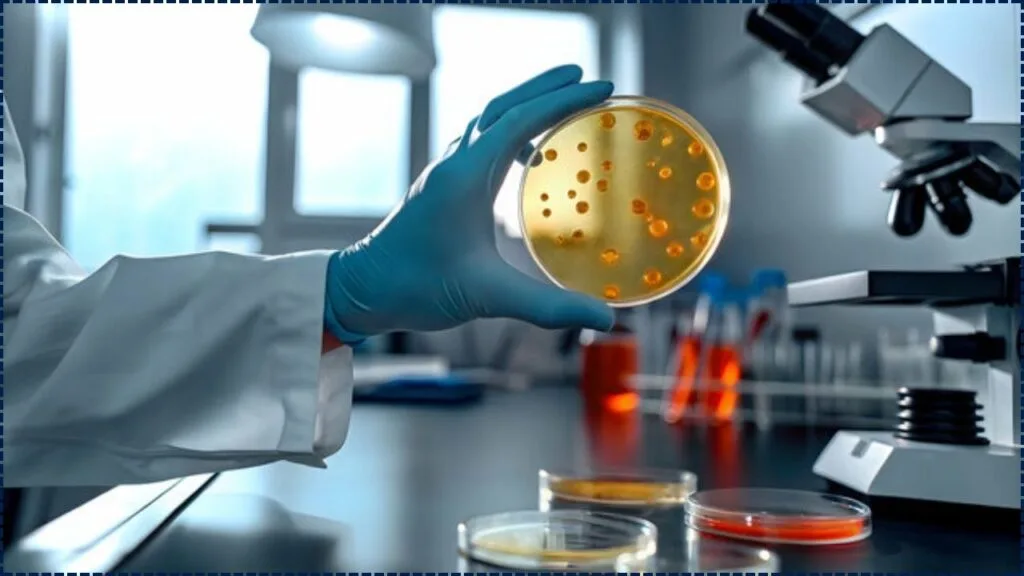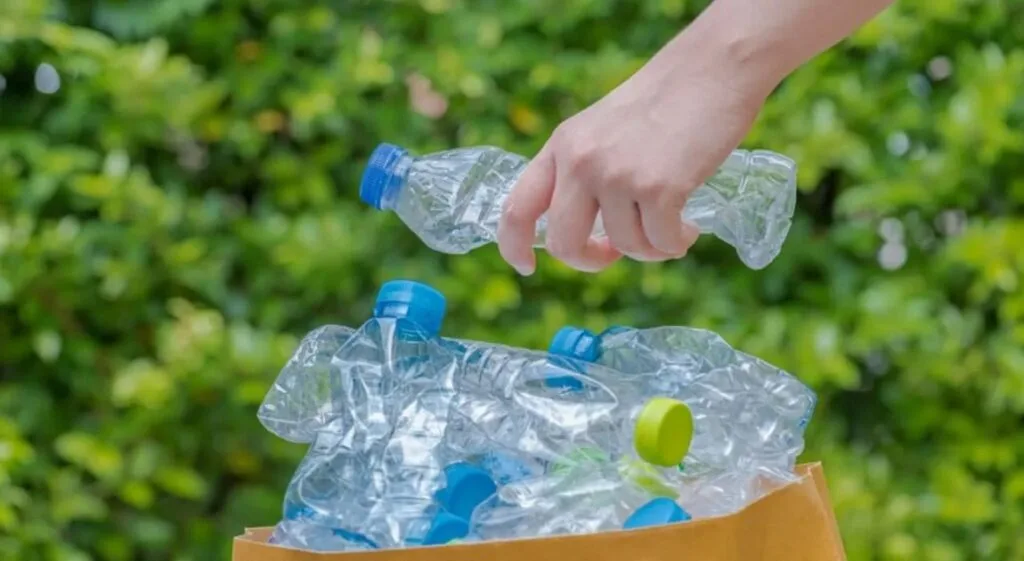In an inspiring breakthrough, researchers at the University of Edinburgh have found a hopeful way to turn plastic waste into paracetamol, a widely used painkiller, using genetically modified E. coli bacteria. This discovery tackles the global plastic pollution crisis while offering a kinder, more sustainable way to produce life-saving medicines. By harnessing the power of science and compassion, this innovation transforms harmful waste into something that heals, bringing hope to both people and the planet.

This breakthrough is a game-changer that combines environmental sustainability with pharmaceutical innovation, offering a potential solution to two of the world’s most pressing problems: plastic pollution and unsustainable drug production.
Scientists Turn Plastic Waste Into Painkillers
| Aspect | Details |
|---|---|
| Discovery Date | June 23, 2025 |
| Lead Institution | University of Edinburgh |
| Key Researchers | Professor Stephen Wallace and team |
| Target Compound | Paracetamol (acetaminophen) |
| Plastic Source | Polyethylene terephthalate (PET) plastic waste |
| Conversion Efficiency | Up to 92% within 24 hours |
| Environmental Impact | Minimal carbon emissions; operates at room temperature |
| Potential Applications | Sustainable pharmaceutical manufacturing; plastic waste recycling |
Scientists at the University of Edinburgh have taken a monumental step toward solving both plastic pollution and the challenges of sustainable pharmaceutical production. By turning plastic waste into paracetamol, this innovation could revolutionize the biotechnology and pharmaceutical industries, making drug production more eco-friendly and less dependent on fossil fuels. Although scaling the process presents challenges, the potential benefits for both the environment and public health are immense. With continued research and development, this could be the beginning of a greener future in medicine and waste management.

Turning Trash Into Treatment: The Science Behind the Breakthrough
The Global Impact of Plastic Waste
Plastic pollution has become a global crisis. According to the United Nations, 9 million tons of plastic waste enter the oceans every year, threatening marine life and ecosystems. Polyethylene terephthalate (PET), the most commonly used plastic in water bottles and packaging, makes up a significant portion of this waste. While recycling efforts have been made, the recycling rate for PET plastics remains low, and a large proportion of plastic waste ends up in landfills or oceans.
This innovative solution, where plastic waste is converted into paracetamol, offers a dual benefit: it not only addresses the problem of plastic pollution but also contributes to the pharmaceutical supply chain by providing an eco-friendly alternative to traditional drug production.
The Role of E. Coli in Biotransformation
The team at the University of Edinburgh used genetically engineered E. coli bacteria to perform the critical step of converting PET plastic into paracetamol. Here’s how the process works:
- Chemical Pre-Treatment: PET plastic is first broken down into terephthalic acid (TPA), a compound that serves as the starting point for further chemical reactions.
- Bacterial Conversion: The TPA is then introduced to genetically modified E. coli, which has been engineered to metabolize TPA. The bacteria perform a Lossen rearrangement—a chemical reaction that usually requires extreme laboratory conditions—at room temperature, facilitated by the phosphate within the bacterial cells.
- Final Transformation: The bacteria then convert the resulting para-aminobenzoic acid (PABA) into paracetamol with up to 92% conversion efficiency within 24 hours.
This process is not only highly efficient but also operates at room temperature, making it energy-efficient and significantly reducing the carbon footprint of pharmaceutical production.
Environmental and Economic Benefits
Reducing Plastic Pollution
By converting PET plastic waste into valuable pharmaceuticals, this technology offers a solution to plastic pollution that is both innovative and practical. Instead of piling up in landfills or floating in our oceans, plastics can now be recycled into useful products that can directly benefit society. This method could help reduce the environmental impact of plastic waste while also promoting the recycling industry.
Sustainable Pharmaceutical Manufacturing
Traditional pharmaceutical manufacturing relies heavily on fossil fuels, contributing to carbon emissions and environmental degradation. In contrast, this new method uses waste plastic as a raw material for producing paracetamol. By utilizing genetically engineered microbes, the process is not only more sustainable but also cost-effective. It could reduce dependence on petrochemical-based raw materials and promote greener alternatives in medicine production.
Economic Potential
The potential for this biotechnological process to scale up could create economic growth in both the biotechnology sector and the recycling industry. The ability to recycle waste plastic into drugs could open new avenues for eco-friendly drug production and create new job opportunities in industries focused on sustainability.
Comparing This Process with Traditional Drug Manufacturing
Traditional methods of producing paracetamol and other pharmaceuticals often require the use of petrochemicals and fossil fuels. These processes are energy-intensive and generate significant carbon emissions. In contrast, the plastic-to-drug method developed by the University of Edinburgh uses biological processes and waste plastic, which are much more sustainable.
This shift could mark the beginning of a broader trend in the pharmaceutical industry towards greener manufacturing processes that have a much smaller environmental footprint.
Future Potential: Expanding Beyond Paracetamol
While the current breakthrough focuses on the production of paracetamol, the potential for this technology goes far beyond just painkillers. In the future, researchers could apply the same principles to the creation of other essential drugs or even bioplastics and biofuels. For example:
- Bio-based plastics could be produced from waste plastics, reducing our dependence on fossil fuels and contributing to a circular economy.
- Biochemicals used in various industries could also be synthesized from waste plastic.
This approach aligns with the growing trend toward bio-based materials and a more sustainable economy.
Related Links
Hubble’s Stunning New Galaxy Photo Packed with Baby Stars 64 Million Light-Years Away
New Images Offer Detailed Look at the Sun’s Surface
SpaceX Falcon Rocket Launches Next-Gen GPS Satellite for U.S. Space Force and Lockheed Martin
Challenges and Future Outlook
Scaling the Process
While this breakthrough is promising, one of the biggest challenges is scaling the process from the lab to the industrial level. Researchers will need to optimize the technique for larger quantities of PET plastic and ensure that the bacteria can continue to perform effectively at industrial scales.
Regulatory and Public Concerns
As with any new biotechnological process, regulatory approval will be crucial. The use of genetically modified organisms (GMOs) in pharmaceutical manufacturing often raises concerns. Rigorous safety testing and public education will be essential to gain trust in this new method and ensure its safe application.
The Road Ahead
As research progresses, this technology could become a cornerstone of sustainable medicine production. Future improvements could lead to more efficient processes, enabling the pharmaceutical industry to meet global demand for painkillers while minimizing its environmental impact. Visit the University of Edinburgh’s news page.
FAQs
Q1: How does the plastic-to-paracetamol process work?
A1: E. coli bacteria are genetically engineered to break down PET plastic into terephthalic acid (TPA), which is then converted into paracetamol through several chemical reactions.
Q2: What are the environmental benefits of this process?
A2: The process reduces plastic waste and carbon emissions compared to traditional pharmaceutical production, offering a more sustainable method for making essential drugs.
Q3: Can this technology be used to produce other drugs?
A3: Yes, the process can potentially be expanded to produce other drugs or bio-based materials, like bioplastics or biofuels.
Q4: What challenges does this process face in scaling up?
A4: Scaling the process involves optimizing the method for large-scale production and ensuring efficient conversion of plastic waste into useful products.
Q5: How does this compare to traditional drug manufacturing?
A5: Traditional methods rely on fossil fuels, which are energy-intensive and produce high emissions, whereas the plastic-to-drug method uses sustainable raw materials and produces minimal environmental impact.








